Hohenlohe
The House of Hohenlohe (pronounced [hoːənˈloːə]) is a German princely dynasty. It ruled an immediate territory within the Holy Roman Empire which was divided between several branches. The Hohenlohes became imperial counts in 1450. The county was divided numerous times and split into several principalities in the 18th century.
County (Principality) of Hohenlohe Grafschaft (Fürstentum) Hohenlohe | |||||||||
|---|---|---|---|---|---|---|---|---|---|
| 1450–1806 | |||||||||
.svg.png) Coat of arms
| |||||||||
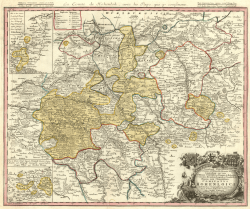 Hohenlohe state, Homann 1748 | |||||||||
| Status | State of the Holy Roman Empire | ||||||||
| Capital | Öhringen | ||||||||
| Religion | Roman Catholic Lutheran | ||||||||
| Government | Monarchy | ||||||||
| Margrave | |||||||||
• 1157–70 | Albert the Bear (first) | ||||||||
• 1797–1806 | Frederick William IV (last) | ||||||||
| History | |||||||||
• Established | 1450 | ||||||||
| 13 May | |||||||||
| 1500 | |||||||||
| 21 May 1744 | |||||||||
| 12 July 1806 | |||||||||
| |||||||||
In 1806 the Princes of Hohenlohe lost their independence through mediatisation initialized by Napoleon, and their lands became parts of the kingdoms of Bavaria and of Württemberg by the Act of the Confederation of the Rhine (12 July 1806), a confederation of client states of the First French Empire.[1] In 1806 the area of Hohenlohe was 1,760 km² and its estimated population was 108,000.[2]
Having lost their Imperial immediacy, the Princes of Hohenlohe still kept their private possessions. Until the German Revolution of 1918–19, just as other mediatized families, they also retained important political privileges. They were considered equal by birth (Ebenbürtigkeit) to the European sovereign houses. In Bavaria, Prussia and Württemberg the Princes of Hohenlohe received hereditary seats in the Houses of Lords. In 1825 the German Confederation recognized the right of all members of the house to be styled Serene Highness (Durchlaucht), with the title Fürst for the heads of its branches, and princes/princesses for the other members.[3]
History
The first ancestor was mentioned in 1153 as Conrad, Lord of Weikersheim. His son Conrad jun. called himself Lord of Hohenloch (or Hohlach), after he moved to Hohlach Castle (no longer existing), near Simmershofen, where the family had the Geleitrecht (right of escorting travellers and goods and charging customs) along the Tauber river on the trading route between Frankfurt and Augsburg. His brothers Heinrich I and Albert also took on the name Hohlach (which later was to become Hohenlohe). The dynasty's influence was soon perceptible between the Franconian valleys of the Kocher, the Jagst and the Tauber rivers, an area that was to be called the Hohenlohe Plateau.[4] Their main seats were Weikersheim, Hohlach and Brauneck.

 Brauneck Castle
Brauneck Castle
Hohlach later became part of the Principality of Ansbach, a subsequent state of the Hohenzollern Burgraviate of Nuremberg, to which the nearby town of Uffenheim was sold in 1378[5], and Hohlach some time later. Heinrich von Hohenlohe (d. 1249), a son of Heinrich I, became Grand Master of the Teutonic Order.
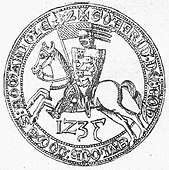
In 1230 the grandsons of Heinrich I (died 1183), Gottfried and Conrad, supporters of Emperor Frederick II, founded the lines of Hohenlohe-Hohenlohe and Hohenlohe-Brauneck, the names taken from their respective castles. The emperor granted them the Italian counties of Molise and Romagna in 1229/30, but they were not able to hold them for long. Gottfried was a tutor and close advisor to the emperor's son king Conrad IV. When the latter survived an assassination attempt plotted by bishop Albert of Regensburg, he granted Gottfried some possessions of the Prince-Bishopric of Regensburg, namely the Vogt position for the Augustine Stift at Öhringen and the towns of Neuenstein and Waldenburg. Gottfried's son Kraft I acquired the town of Ingelfingen with Lichteneck Castle. In 1253 the town and castle of Langenburg were inherited by the lords of Hohenlohe, after the lords of Langenburg had become extinct. By 1300, town and castle Schillingsfürst had also passed into the possession of the Hohenlohe lords.
The branch of Hohenlohe-Brauneck became extinct in 1390, its lands (Brauneck near Creglingen) were sold to the Hohenzollern margraves of Ansbach in 1448. Hohenlohe-Hohenlohe was divided into several branches, only two of which need to be mentioned here: Hohenlohe-Weikersheim and Hohenlohe-Uffenheim-Speckfeld (1330-1412). Hohenlohe-Weikersheim, descended from count Kraft I (died 1313), also underwent several divisions, the most important following the deaths of counts Albert and George in 1551. At this time the two main branches of Hohenlohe-Neuenstein and Hohenlohe-Waldenburg were founded by the sons of George. Meanwhile, in 1412, the family of Hohenlohe-Uffenheim-Speckfeld had become extinct, and its lands passed to other families by marriage. George Hohenlohe was prince-bishop of Passau (1390–1423) and archbishop of Esztergom (1418–1423), serving King Sigismund of Hungary (the later King of Bohemia and Holy Roman Emperor).
In 1450, Emperor Frederick III granted Kraft of Hohenlohe (died 1472) and his brother, Albrecht, the sons of Elizabeth of Hanau, heiress to Ziegenhain, the title of Count of Hohenlohe and Ziegenhain (Graf von Hohenlohe und zu Ziegenhain) and invested them with the County of Ziegenhain.[6] Actually, the Landgraves of Hesse soon took the County of Ziegenhain, and the House of Hohenlohe eventually gave up the reference to Ziegenhain. However, their lordship of Hohenlohe was elevated to the status of an imperial county in 1495. The county remained divided between several family branches, however still being an undivided Imperial Fief under the imperial jurisdiction, and was to be represented by the family's senior vis-à-vis the imperial court.
The Hohenlohe possessions were located in the Franconian Circle, and the family had two voices in its Diet / Assembly (Kreistag).[7] The Hohenlohe family had six voices in the Franconian College of Imperial Counts (Fränkisches Reichsgrafenkollegium) of the Imperial Diet (Reichstag).[8] The right to vote in the Imperial Diet gave a German noble family the status of imperial state (Reichsstände) and made them belong to the ruling High Nobility (Hoher Adel).
By 1455, Albrecht of Hohenlohe had acquired the castle and lordship of Bartenstein (near Schrozberg). In 1472 the town and castle of Pfedelbach were bought by the Hohenlohe family. In 1586, Weikersheim was inherited by count Wolfgang who reconstructed the medieval Weikersheim Castle into a Renaissance palace. When the last Weikersheim count, Carl Ludwig, died around 1760, his lands were divided between the Langenburg, Neuenstein and Öhringen branches; in 1967, Prince Constantin of Hohenlohe-Langenburg sold Weikersheim Castle, meanwhile a museum, to the state.
The existing branches of the Hohenlohe family are descended from the lines of Hohenlohe-Neuenstein and Hohenlohe-Waldenburg, established in 1551 by Ludwig Kasimir (d. 1568) and Eberhard (d. 1570), the sons of Count Georg I (d. 1551).[9] Since Georg had become protestant on his deathbed, the reformation was introduced in the county and confirmed by the Peace of Augsburg in 1556. In 1667 however, a confessional division arose when the two sons of Georg Friedrich II of Hohenlohe-Waldenburg-Schillingsfürst, Christian (founder of the Bartenstein line) and Ludwig Gustav (founder of the Schillingsfürst line), converted to the Roman Catholic Church. After the extinction of two other side lines, Waldenburg in 1679 and Waldenburg-Pfedelbach in 1728, the whole property of the main branch Hohenlohe-Waldenburg was inherited by the catholic counts.
Of the Lutheran branch of Hohenlohe-Neuenstein, which underwent several partitions and inherited the county of Gleichen in Thuringia (with its residence in Ohrdruf) in 1631, the senior line became extinct in 1805, while in 1701 the junior line divided itself into three branches, those of Hohenlohe-Langenburg, Hohenlohe-Ingelfingen and Hohenlohe-Kirchberg. The branch of Kirchberg died out in 1861, with its lands and castle passing to the Öhringen-Neuenstein branch (sold in 1952), but the branches of Hohenlohe-Langenburg (residing at Langenburg Castle) and Hohenlohe-Ingelfingen still exist, the latter being divided into Hohenlohe-Ingelfingen-Öhringen (which became extinct in 1960) and Hohenlohe-Oehringen (today residing at Neuenstein Castle). The two actual heads of the branches of Langenburg and Oehringen are traditionally styled Fürst.
Frederick Louis, Prince of Hohenlohe-Ingelfingen, had acquired the estates of Slawentzitz, Ujest and Bitschin in Silesia by marriage in 1782, an area of 108 square miles, where his grandson Hugo zu Hohenlohe-Öhringen, Duke of Ujest, established calamine mines and founded one of the largest zinc smelting plants in the world. His son, prince Christian Kraft (1848-1926), sold the plants and went almost bankrupt with a fund in which he had invested in 1913; the mines he had still kept were, however, divided between Germany and Poland, togehter with Upper Silesia, in 1922, and in 1945 were depropriated by communist Poland.
The Roman Catholic branch of Hohenlohe-Waldenburg was soon divided into three side branches, but two of these had died out by 1729. The surviving branch, that of Schillingsfürst, was divided into the lines of Hohenlohe-Schillingsfürst and Hohenlohe-Bartenstein, with further divisions following. The four catholic lines which still exist today (with their heads styled Fürst) are those of Hohenlohe-Schillingsfürst (at Schillingsfürst), Hohenlohe-Waldenburg-Schillingsfürst (at Waldenburg), Hohenlohe-Jagstberg (at Haltenbergstetten) and Hohenlohe-Bartenstein (at Bartenstein). A side branch of the House of Hohenlohe-Schillingsfürst inherited the dukedom of Ratibor in Silesia in 1834, together with the principality of Corvey in Westphalia. While the Silesian property was expropriated in Poland in 1945, Corvey Abbey remains owned by the Duke of Ratibor to this day, together with further inherited properties in Austria.
The Holy Roman Emperors granted the title of Imperial Prince (Reichsfürst) to the Waldenburg line (in 1744) and to the Neuenstein (Öhringen) line (in 1764).[10]
In 1757, the Holy Roman Emperor elevated possessions of the Waldenburg line to the status of Imperial Principality.[11]
In 1772, the Holy Roman Emperor elevated possessions of the Neuenstein and Langenburg lines to the status of Imperial Principality.[11]
On 12 July 1806, the principalities became parts of the kingdoms of Bavaria and of Württemberg by the Act of the Confederation of the Rhine. Therefore, the region of Hohenlohe is presently located for the most part in the north eastern part of the State of Baden-Württemberg (forming the counties of Hohenlohe, Schwäbisch Hall and the southern part of Main-Tauber-Kreis), with smaller parts in the Bavarian administrative districts of Middle Franconia and Lower Franconia. The Hohenlohisch dialect is part of the East Franconian German dialect group and the population still values its traditional distinct identity.
Family members
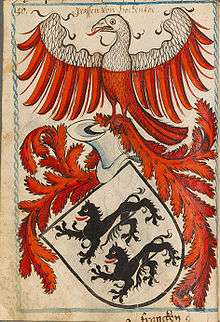
Notable members of the von Hohenlohe family include:
- Heinrich von Hohenlohe, 13th-century Grand Master of the Teutonic Knights
- Gottfried von Hohenlohe, 14th-century Grand Master of the Teutonic Knights
- Frederick Louis, Prince of Hohenlohe-Ingelfingen (1746–1818), Prussian general
- Louis Aloy de Hohenlohe-Waldenburg-Bartenstein (1765–1829), marshal and peer of France
- August, Prince of Hohenlohe-Öhringen (1784–1853), general
- Prince Alexander of Hohenlohe-Waldenburg-Schillingsfürst (1794–1849), priest
- Kraft, Prinz zu Hohenlohe-Ingelfingen (1827–1892), Prussian general and writer
- Victor I, Duke of Ratibor, Prince of Corvey, Prince of Hohenlohe-Schillingsfürst (1818–1893)
- Prince Chlodwig zu Hohenlohe-Schillingsfürst (1819–1901), Chancellor of Germany
- Gustav Adolf Hohenlohe (1823–1896), a Roman Catholic cardinal
- Prince Konrad of Hohenlohe-Waldenburg-Schillingsfürst (1863–1918), Austrian statesman and aristocrat
- Prince Friedrich Franz von Hohenlohe-Waldenburg-Schillingsfürst (1879–1958), Austrian military attache and later German spy-master. His first wife, Stephanie von Hohenlohe (1891–1972), was a German spy in the 1930s and at the start of WWII.
- Gottfried, Prince of Hohenlohe-Langenburg (1897–1960), husband of Princess Margarita of Greece and Denmark (1905–1981), the sister of Prince Philip, Duke of Edinburgh
- Philipp, Prince of Hohenlohe-Langenburg (b. 1970), grandson of Gottfried, owner of Langenburg Castle
- Princess Victoria of Hohenlohe-Langenburg (b. 1997), 20th Duchess of Medinaceli etc, Grandee of Spain, who is, with 43 titles, the most titled person in the world[12]
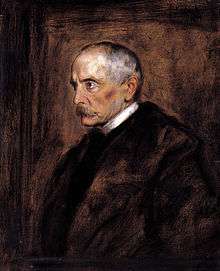 Prince Chlodwig zu Hohenlohe-Schillingsfürst (1819–1901), Chancellor of the German Empire (1894–1900)
Prince Chlodwig zu Hohenlohe-Schillingsfürst (1819–1901), Chancellor of the German Empire (1894–1900)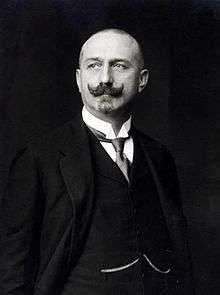 Prince Konrad of Hohenlohe-Waldenburg-Schillingsfürst (1863–1918), Prime Minister of Austria-Hungary (1906)
Prince Konrad of Hohenlohe-Waldenburg-Schillingsfürst (1863–1918), Prime Minister of Austria-Hungary (1906)
Castles of the House of Hohenlohe
(*) still owned by members of the House of Hohenlohe
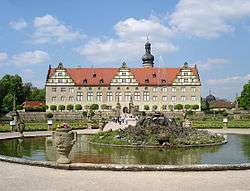
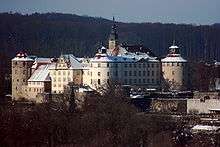 Langenburg Castle*
Langenburg Castle*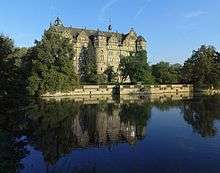 Neuenstein Castle*
Neuenstein Castle* Öhringen Castle
Öhringen Castle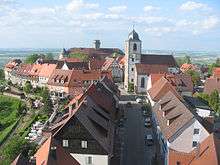 Waldenburg town and castle*
Waldenburg town and castle*- Bartenstein Castle* near Schrozberg
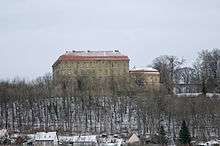 Schillingsfürst Castle*
Schillingsfürst Castle*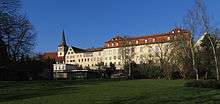 Ingelfingen Castle
Ingelfingen Castle Pfedelbach Castle
Pfedelbach Castle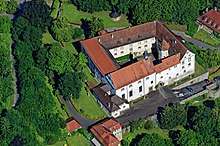 Haltenbergstetten Castle*
Haltenbergstetten Castle* Kirchberg Castle
Kirchberg Castle Rudy near Ratibor, Silesia (Poland)
Rudy near Ratibor, Silesia (Poland) Imperial Abbey of Corvey*, Westfalia
Imperial Abbey of Corvey*, Westfalia- Grafenegg Castle*, Lower Austria
- Neuaigen Castle*, Lower Austria
Heads of existing branches
Neuenstein line (lutheran)
- Hohenlohe-Langenburg branch: Philipp, 10th Prince of Hohenlohe-Langenburg (born 1970), at Langenburg castle
- Hohenlohe-Oehringen branch: Kraft, 9th Prince of Hohenlohe-Oehringen, 5th Duke of Ujest (born 1933), at Neuenstein castle
Waldenburg line (catholic)
- Hohenlohe-Bartenstein branch: Ferdinand, 10th Prince of Hohenlohe-Bartenstein, (born 1942), at Bartenstein castle
- Hohenlohe-Jagstberg branch: Alexander, 2nd Prince of Hohenlohe-Jagstberg (born 1937), at Haltenbergstetten castle
- Hohenlohe-Waldenburg-Schillingsfürst branch: Felix, 10th Prince of Hohenlohe-Waldenburg-Schillingsfürst (born 1963), at Waldenburg castle
- Hohenlohe-Schillingsfürst branch: Constantin, 12th Prince of Hohenlohe-Schillingsfürst (born 1949), at Schillingsfürst castle
- Ratibor and Corvey branch: Viktor, 5th Duke of Ratibor and 5th Prince of Corvey, Prince of Hohenlohe-Schillingsfürst-Metternich-Sándor (b. 1964), owner of the Imperial Abbey of Corvey as well as Grafenegg and Neuaigen castles, Lower Austria
Legion de Hohenlohe
The Legion de Hohenlohe was a unit of foreign soldiers serving in the French Army until 1831, when its members (as well as those of the disbanded Swiss Guards) were folded into the newly-raised French Foreign Legion for service in Algeria.
Notes
- Hölzle. Der deutsche Südwesten am Ende des alten Reiches (Stuttgart : 1938) : page 102.
- "Map of Baden-Wurttemberg 1789 - Northern Part". hoeckmann.de.
- Almanach de Gotha : 1910; pages 140-148.
- Europäische Stammtafeln: Neue Folge; Band XVII (1998); table # 1
- Stokvis. Manuel d'histoire, de généalogie et de chronologie (Leiden : 1887–1893): tome III; pages.354-356.
- Europäische Stammtafeln: Neue Folge; Band XVII (1998); table # 3; Almanach de Gotha, 1941; page 216.
- Berghaus. Deutschland seit hundert Jahren (Leipzig : 1859–1862): Abtheilung I; Band I; page 165.
- Lancizolle. Uebersicht der deutschen Reichsstandschafts- und Territorial-Verhältnisse(Berlin : 1830) : page 8, 46
- Europäische Stammtafeln: Neue Folge; Band XVII (1998); tables # 4,6,15
- Frank. Standeserhebungen und Gnadenakte für das Deutsche Reich und die österreichischen Erblande (Senftenegg : 1967–1974): Band 2; page 221
- Frank. Standeserhebungen und Gnadenakte für das Deutsche Reich und die österreichischen Erblande (Senftenegg : 1967–1974): Band 2; page 221.
- "Victoria de Hohenlohe, la joven con más títulos nobiliarios de España". abc (in Spanish). 2017-10-15. Retrieved 2019-11-25.
References
| Wikisource has the text of the 1911 Encyclopædia Britannica article Hohenlohe. |
| Wikimedia Commons has media related to Hohenlohe. |
- Genealogy of the House of Hohenlohe

- See generally A. F. Fischer, Geschichte des Hauses Hohenlohe (1866–1871),
- K. Weller, Hohenlohisches Urkundenbuch. 1153–1350 (Stuttgart, 1899–1901), and
- Geschichte des Hauses Hohenlohe (Stuttgart, 1904). (W. A. P.; C. F. A.)
- Alessandro Cont, La Chiesa dei principi. Le relazioni tra Reichskirche, dinastie sovrane tedesche e stati italiani (1688-1763), preface of Elisabeth Garms-Cornides, Trento, Provincia autonoma di Trento, 2018, pp. 152-156, https://www.academia.edu/38170694/La_Chiesa_dei_principi._Le_relazioni_tra_Reichskirche_dinastie_sovrane_tedesche_e_stati_italiani_1688-1763_prefazione_di_Elisabeth_Garms-Cornides_Trento_Provincia_autonoma_di_Trento_2018
- European Heraldry page
- The House of Hohenlohe
